
Children's literature or juvenile literature includes stories, books, magazines, and poems that are created for children. Modern children's literature is classified in two different ways: genre or the intended age of the reader, from picture books for the very young to young adult fiction.

Ladybird Books is a London-based publishing company, trading as a stand-alone imprint within the Penguin Group of companies. The Ladybird imprint publishes mass-market children's books.

Brunette Coleman was a pseudonym used by the poet and writer Philip Larkin. In 1943, towards the end of his time as an undergraduate at St John's College, Oxford, he wrote several works of fiction, verse and critical commentary under that name, including homoerotic stories that parody the style of popular writers of contemporary girls' school fiction.
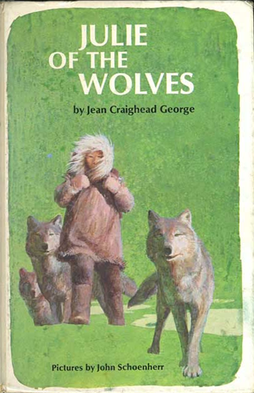
Julie of the Wolves is a children's novel by Jean Craighead George, published by Harper in 1972 with illustrations by John Schoenherr. Set on the Alaska North Slope, it features a young Inuk girl experiencing the changes forced upon her culture from outside. George wrote two sequels that were originally illustrated by Wendell Minor: Julie (1994), which starts 10 minutes after the first book ends, and Julie's Wolf Pack (1997), which is told from the viewpoint of the wolves.
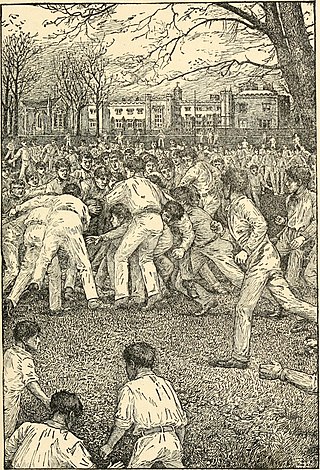
The school story is a fiction genre centring on older pre-adolescent and adolescent school life, at its most popular in the first half of the twentieth century. While examples do exist in other countries, it is most commonly set in English boarding schools and mostly written in girls' and boys' subgenres, reflecting the single-sex education typical until the 1950s. It focuses largely on friendship, honour and loyalty between pupils. Plots involving sports events, bullies, secrets, rivalry and bravery are often used to shape the school story.

Angela Brazil was one of the first British writers of "modern schoolgirls' stories", written from the characters' point of view and intended primarily as entertainment rather than moral instruction. In the first half of the 20th century she published nearly 50 books of girls' fiction, the vast majority being boarding school stories. She also published numerous short stories in magazines.

Marguerite de Angeli was an American writer and illustrator of children's books including the 1950 Newbery Award winning book The Door in the Wall. She wrote and illustrated twenty-eight of her own books, and illustrated more than three dozen books and numerous magazine stories and articles for other authors.
Dorita Fairlie Bruce was a Scottish children's author who wrote the popular Dimsie series of books published between 1921 and 1941. Her books were second in popularity only to Angela Brazil's during the 1920s and 1930s. The Dimsie books alone had sold half a million hardback copies by 1947.

Dimsie Moves Up is the second of the Dimsie books by author Dorita Fairlie Bruce. First published in 1921, the book was illustrated by Wal Paget. The protagonist Dimsie is now a year older and had moved up one grade at the Jane Willard Foundation. The Western Morning News's review described it as "a book that should prove a delight to all school girls" and noted that school sports were featured and that "the rivalry between forms makes thrilling reading."
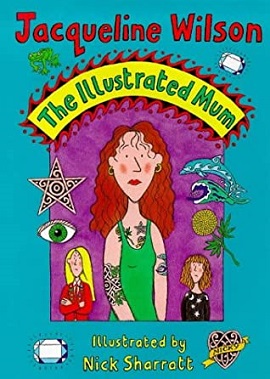
The Illustrated Mum is a children's novel by English author Jacqueline Wilson, first published by Transworld in 1999 with drawings by Nick Sharratt. Set in London, the first person narrative by a young girl, Dolphin, features her manic depressive mother Marigold, nicknamed "the illustrated mum" because of her many tattoos. The title is a reference to The Illustrated Man, a 1951 book of short stories by Ray Bradbury, also named for tattoos.

Elsie Jeanette Dunkerley, was an English girls' story writer, who took the name Oxenham as her pseudonym when her first book, Goblin Island, was published in 1907. Her Abbey Series of 38 titles are her best-known and best-loved books. In her lifetime she had 87 titles published and another two have since been published by her niece, who discovered the manuscripts in the early 1990s. She is considered a major figure among girls' story writers of the first half of the twentieth century, being one of the 'Big Three' with Elinor Brent-Dyer and Dorita Fairlie Bruce. Angela Brazil is as well-known - perhaps more so - but did not write her books in series about the same group of characters or set in the same place or school, as did the Big Three.
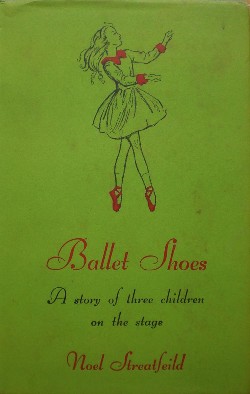
Ballet Shoes: A Story of Three Children on the Stage is a children's novel by Noel Streatfeild, published by Dent in 1936. It was her first book for children, and was illustrated by the author's sister, Ruth Gervis. Diane Goode illustrated a 1991 edition published by Random House.
Mary 'Betty' Newmarsh Woolcock née Ladler (1914–2004) was an English artist and illustrator, most notable for her illustrations in books written by Enid Blyton.
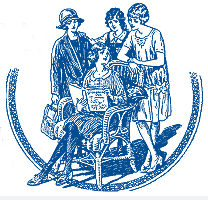
Girls Gone By Publishers is a publishing company run by Clarissa Cridland and Ann Mackie-Hunter and is based in Coleford, Somerset. They re-publish new editions of some of the most popular girls' fiction titles from the twentieth century.
Sybil Tawse, English artist and illustrator.
Gertrude Demain Hammond or Mrs. McMurdie was a British painter and children's book illustrator.

Wolf in the Snow is a 2017 wordless picture book by Matthew Cordell. The book was favorably received by critics and won the 2018 Caldecott Medal. The story has drawn comparisons to fairy tales like Little Red Riding Hood. The nearly wordless book tells the story of a girl and wolf who each get lost in the snowstorm. Cordell used distinctive illustration techniques for the girl and the wolf.

Birdsong is a 2019 children's picture book written and illustrated by Julie Flett. The book follows the story of a young indigenous girl named Katherena, who moves to a countryside home with her mother. Lonely in her new home at first, Katherena develops a friendship with her elderly neighbor, Agnes. The book explores the intergenerational relationship between them. The pages were illustrated with pastel and pencil colours.
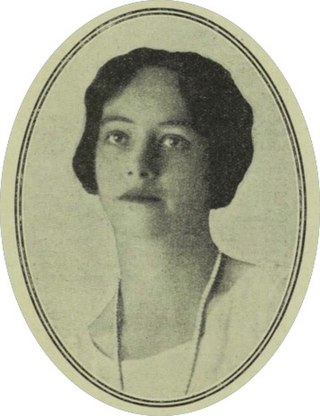
Margaret Horder was an Australian artist and children's book illustrator. She is best known for illustrating books by Joan Phipson, Patricia Wrightson and Nan Chauncy.

















